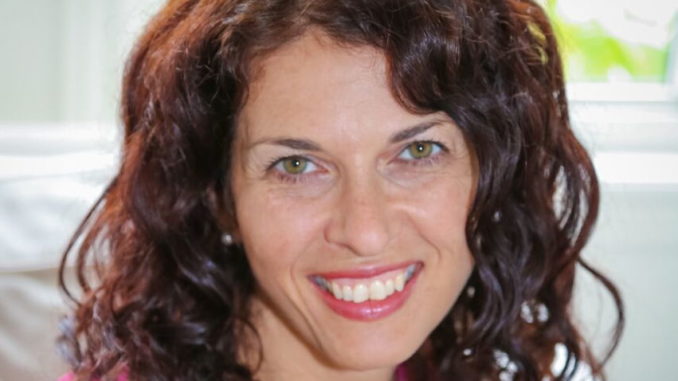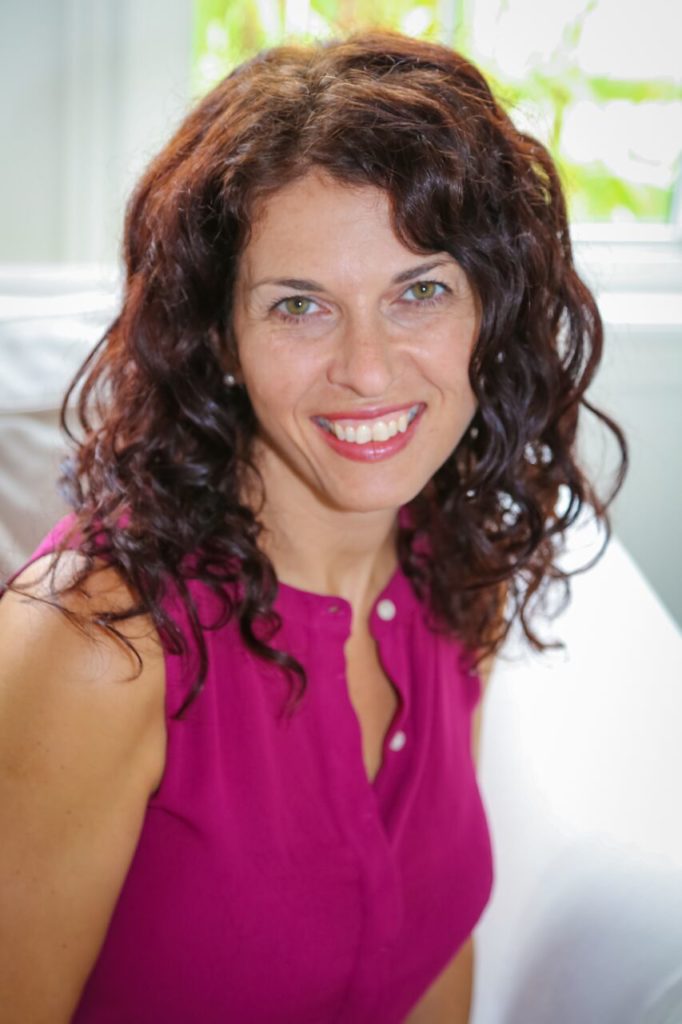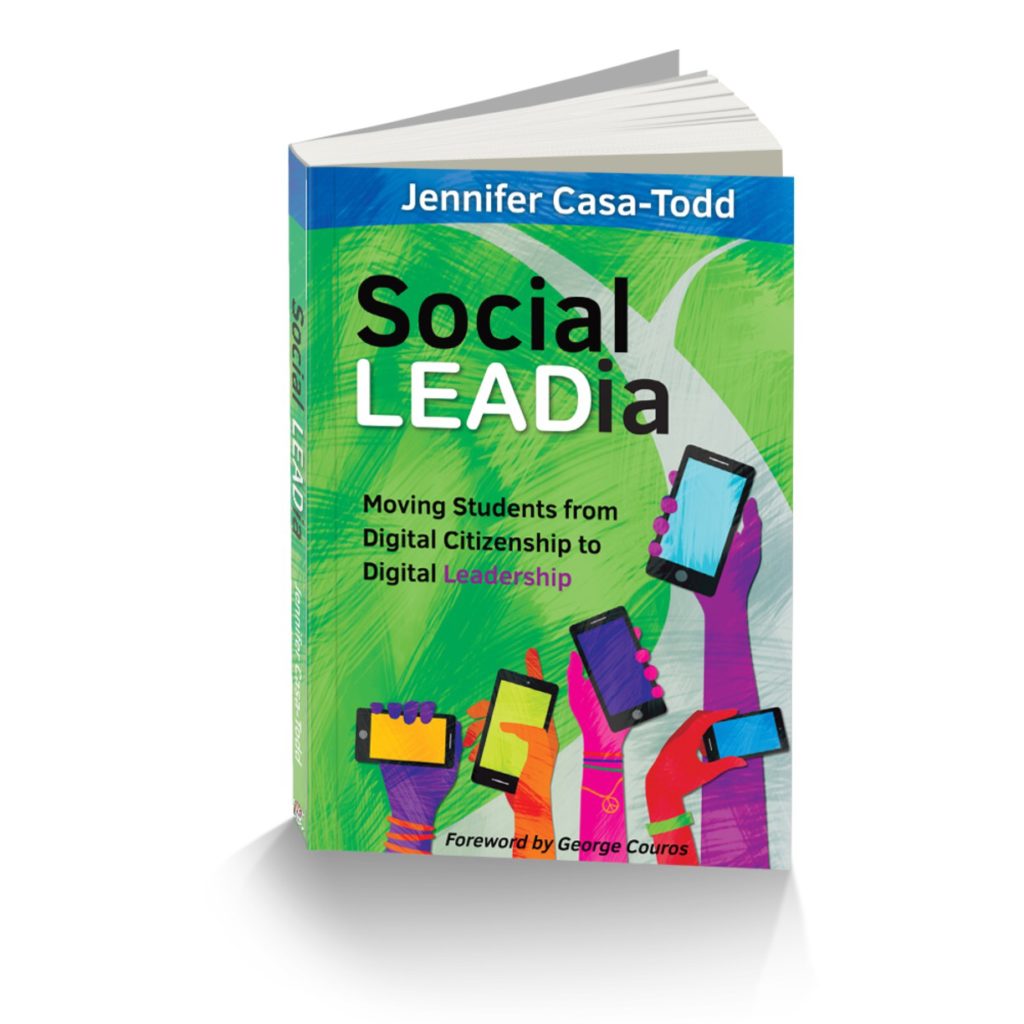
Author of Social LEADia: Moving Students from Digital Citizenship to Digital Leadership
 Jennifer Casa-Todd is a mom, wife, teacher-librarian, former literacy consultant, MEd student, author of Social LEADia, learner and thinker. Wearing her parent hat, she has been the co-chair as well as an active member of Parent Council for over a decade, bringing parent and school communities together for a variety of issues. She has also worked closely with the Bully-Free Alliance of York Region and is an Associate for the Digital Citizenship Institute. In her professional role, she has worked with hundreds of teachers, administrators and students , sharing her passion about bringing student voice into conversations around technology enabled-learning.
Jennifer Casa-Todd is a mom, wife, teacher-librarian, former literacy consultant, MEd student, author of Social LEADia, learner and thinker. Wearing her parent hat, she has been the co-chair as well as an active member of Parent Council for over a decade, bringing parent and school communities together for a variety of issues. She has also worked closely with the Bully-Free Alliance of York Region and is an Associate for the Digital Citizenship Institute. In her professional role, she has worked with hundreds of teachers, administrators and students , sharing her passion about bringing student voice into conversations around technology enabled-learning.
She loves learning and connecting with other educators from across the globe, and is passionate about connecting students to each other and to the world. Technology has the potential to transform learning in ways we can only have imagined when we were in school! With awesome power, comes awesome responsibility too! She believes we need to think critically about issues of equity, access, privacy, and safety, but that part of our role as educators is to inspire students to embrace the opportunities before them to make the online and offline world a better place.
Social LEADia seeks to shift the conversation about social media in education from fear and avoidance to embracing its potential for meaningful engagement in learning. As author Jennifer Casa-Todd puts it,
Digital leadership provides a counter-fear narrative. We know many people are afraid of social media – so much so that the fear seems to influence every decision made around the use of the Internet in schools. There is a sense of hesitancy to allow kids to talk to strangers on the Internet, but when students network with professionals, experts, and authors, they not only gain insights into and ideas about careers, but they also come to see their voices as important and adults as less intimidating. If students are exposed to the “right strangers,” using a critical and educated lens, they will know what appropriate exchanges and requests from those stranger look like. Of course we need to protect kids, but we also need to ensure that student come to see the value and purpose of professional and academic networking before they leave high school. (Social LEADia, p.31-32)
What inspired you to write Social LEADia?
 A series of smaller events really. When my daughter was asked in an interview, “What social media are you on and what will I learn about you when I go there?” I truly felt like I had failed as a mom. She had asked if she could create a vlog (video-blog) of our whale-watching trip and I told her only if her face and name didn’t appear on it. She wants to be a marine biologist!!! What I should have done was said yes, and use it as an opportunity to mentor her. Instead I was a control freak. Shortly thereafter, I heard George Couros define digital leadership as “using the vast reach of technology, especially social media, to improve the lives, well-being and circumstances of others” (Couros 2013). I was wearing my parent hat at the time and, I realized that while I was focused on what not to do, I hadn’t really shown my kids and students what they could do. Thus began my quest. I wrote several blog posts about it, and later would share my passion with a publisher when George introduced us. When things didn’t work out with that publishing house, I was devastated. It was in that moment that I knew this book needed to be written because I needed to share this message far and wide. That is when I sent my manuscript to Dave and Shelley Burgess, which was the best decision I could have ever made.
A series of smaller events really. When my daughter was asked in an interview, “What social media are you on and what will I learn about you when I go there?” I truly felt like I had failed as a mom. She had asked if she could create a vlog (video-blog) of our whale-watching trip and I told her only if her face and name didn’t appear on it. She wants to be a marine biologist!!! What I should have done was said yes, and use it as an opportunity to mentor her. Instead I was a control freak. Shortly thereafter, I heard George Couros define digital leadership as “using the vast reach of technology, especially social media, to improve the lives, well-being and circumstances of others” (Couros 2013). I was wearing my parent hat at the time and, I realized that while I was focused on what not to do, I hadn’t really shown my kids and students what they could do. Thus began my quest. I wrote several blog posts about it, and later would share my passion with a publisher when George introduced us. When things didn’t work out with that publishing house, I was devastated. It was in that moment that I knew this book needed to be written because I needed to share this message far and wide. That is when I sent my manuscript to Dave and Shelley Burgess, which was the best decision I could have ever made.
In the book you describe what it takes to be truly literate in 2017, and you also describe the new digital divide. What do you want educators to know about these new contexts?
I was in a District-level role supporting literacy for six years. In that time, I also introduced teachers to blogs, transmedia, and other tools which would allow students to demonstrate their learning in a variety of ways. When I joined our Journey Towards 20/20 team, which we called 21C, which was focused on technology enabled learning, many people would question whether I was doing “literacy” or “21C” work, not acknowledging that it was the same work. Literacy is not about the Ontario Secondary School Literacy Test (OSSLT), nor is it about reading and writing alone. I tell teachers it is about reading and writing the world. Today that world is multi-modal and includes communication via social media and so that is why our teaching, learning, and assessment practices need to be multi-modal as well.
In terms of the inter-generational digital literacy divide, Donna Fry, a former education officer for Ministry of Education in Ontario and I had several conversations about this. The research study, Children’s Rights in the Digital Age (which talks a great deal about literacy as well), talks about a generation gap between parents and teens in particular:
“A generation gap prevents teenagers to communicate effectively with parents and grandparents” (Trinidad and Tobago). This generational prejudice cuts both ways. That is, although children frequently took issue with the fact that parents think children are often unaware of the consequences of their actions online, children articulated what is potentially an equally limited conception of adult’s understanding of, and capacities to use, digital media”. (44)
Thus I think it is imperative that we seek to understand one another. I try not to make assumptions about what kids are doing online. As I walk around my Library Learning Commons, my question to students is, “Is your device helping you or distracting you?” This has been an effective approach with my teens as well. I also ask my kids to show me how stuff works. For example, asking my daughter about how to use snapchat has been such a powerful experience because not only am I learning more about the tool, but I am also showing her that I value her knowledge.
Why do you think the fear narrative has dominated digital citizenship instruction in schools, and what will it take to change this?
First off, I recognize that there has always been a fear associated with technological advancement and change. There are definitely things to fear on social media if you aren’t careful. When I held a panel discussion with police, students and parents, the police had many negative stories to share. We often get police to come and talk to kids because I think we believe that if kids understand the worst case scenarios, it will help them to think twice. The media often amplifies the negative examples as well. The reality is that many kids do not have negative experiences on as regular a basis as you might be led to believe, and so they think parents are being unnecessarily controlling or extreme. I always say, I’d rather my kids be mindful every day rather than fearful in starts and spurts. Every interaction using technology and social media is an opportunity to teach kids how to be safe in context. Henry Jenkins in Participatory Cultures in a Networked Era tells us that, “many adults [are] shutting down opportunities that were meaningful for young people out of a moral panic response to technological and cultural change.” (pg 36)
The way to change this can only be by engaging students in a contextual use of social media tools for learning and for digital leadership and to have ongoing conversations about not just how to be safe, but how talking to the “right strangers” online can provide incredible opportunities for learning, networking, perspective taking, empathy, and idea-sharing.
In reading the book it is clear that you see the use of instructional technology and particularly social / interactive media as critical to learning for today’s students. You go beyond the idea of technology enhancing learning to describing the benefits as amplifying learning. Is it possible for students to learn effectively without having technology tools, resources and instruction ubiquitously available?
Of course it is. In fact, in some ways I am concerned when I see 1:1 use of technology which sometimes means students are interacting with a screen instead of with each other. We need to be careful to balance on and offline and I think that is the part of the crux of it. Students don’t distinguish on and offline. Technology for them is a part of life.
When I look at the prevalence of mobile phones in general, however, and reflect on the fact that for the most part, students use those powerful computers in their pockets as sources of entertainment, I feel like we are missing out on such incredible opportunities that technology affords us. Teachers awaken in students an understanding of the world; that world today includes technology.
In Great to Excellent: Launching the Next Stage of Ontario’s Education Agenda (2013), Michael Fullan referred to the “pockets of excellence” across the province in making good pedagogy the foundation of learning with technology, and spoke optimistically about making this more ubiquitous. Where are we when it comes to using social media in schools? Are we ready to move beyond pockets of excellence to truly realizing positive change more broadly?
I don’t think we are, unfortunately. Even since the book was published schools in Toronto are banning social media. I think there are many, many educators who are connected on Twitter or Voxer, or Facebook who are realizing the positive potential, but I still do struggle with how we get more people there. It’s truthfully why I wrote a book where the focus is on celebrating the teachers and students who are leveraging technology and social media and achieving success. It is my hope that their voices, the various personal and professional examples I give will entice teachers who have no idea what connecting via social media can look like an insight as to why it is so important.
What should every educator be able to do when it comes to social media?
That’s an interesting question. I think that every educator needs to at least understand the conventions of the tool and understand how to report or block anything inappropriate, but beyond that, I think we just need to be extremely curious with our students (I recommend a think-aloud); asking questions about privacy, security, safety, and opportunities for leadership.
You have had many roles in education, as an English teacher, a central leader for literacy and 21st Century Learning, and now a teacher-librarian. In the book you describe opportunities you’ve had in each of these roles to influence practice. Does the teacher-librarian have a unique role in moving the learning stance of a school forward to digital leadership?
Absolutely! Teacher-Librarians are school leaders! I feel like in my role as Teacher-Librarian, I have been able to develop relationships with teachers and have an impact on students directly in a way that I was not necessarily able to do when I was working at the district level or teaching a subject. I have been able to connect classes globally, advise school councils and clubs about their use of social media, work with Careers classes on how to leverage social media for career planning, and I run the school website and twitter accounts so I can ensure that I am modeling digital leadership. My own passion projects (Amazing Race EDU and the Ontario Education Student Twitter Chat (@ONedSsChat) have made their way into classrooms as well. Every interaction I have with a student is an opportunity to empower them to digital leadership and when you consider the number of students that come through the Library Learning Commons, that is a significant impact.
What practical advice can you give to teacher-librarians in this regard – perhaps your top three pieces of advice?
- Continue to invite teachers to connect their students to the world and to co-teach with you; even if they say no right now, you may be planting a seed for the future.
- Connect with other teacher-librarians via social media and become part of a community of leaders and learners.
- Model digital leadership in all that you do, even if you think noone is watching or no one cares.
Jennifer, you leverage social media very effectively, with an extensive and strong professional learning network. When Social LEADia was published in the summer of 2017, word seemed to spread like wildfire! We can’t help but think that there are some lessons to be learned from this. How do you think teacher-librarians could use social media not only for their own learning, but also to be influencers in their schools, their boards, and beyond?
I have been fortunate to find people online who share and value my work and I make a point to do this for others. I think all teacher-librarians need to connect with one another, learn from each other, and make sure to advocate for our very important role in schools. We can sometimes feel isolated in our role, but when we celebrate each other and connect, we recognize that collectively, we are a powerful force for positive change. Social media allows for this to happen. If you aren’t already connected, this should be a first priority. There is such an incredible teacher-librarian community in Ontario and across North America. Surround yourself with people who are working to move learning forward in their contexts and join the movement yourself.
What’s next for Jennifer Casa-Todd?
Oh gosh. I don’t know. I am very much enjoying the opportunity to speak and even keynote in different places around the world. For now, I want to complete my Masters and spread the Social LEADia message. I am so enjoying my role as a teacher-librarian and don’t imagine I will leave that any time soon. Having said that, I am always open to new opportunities and experiences as these have taken my life on unexpected but very fruitful turns.
Congratulations on the success of Social LEADia, Jennifer, and thank you so much for taking the time to talk with us. We are proud to count you amongst the ranks of Canada’s teacher-librarians!